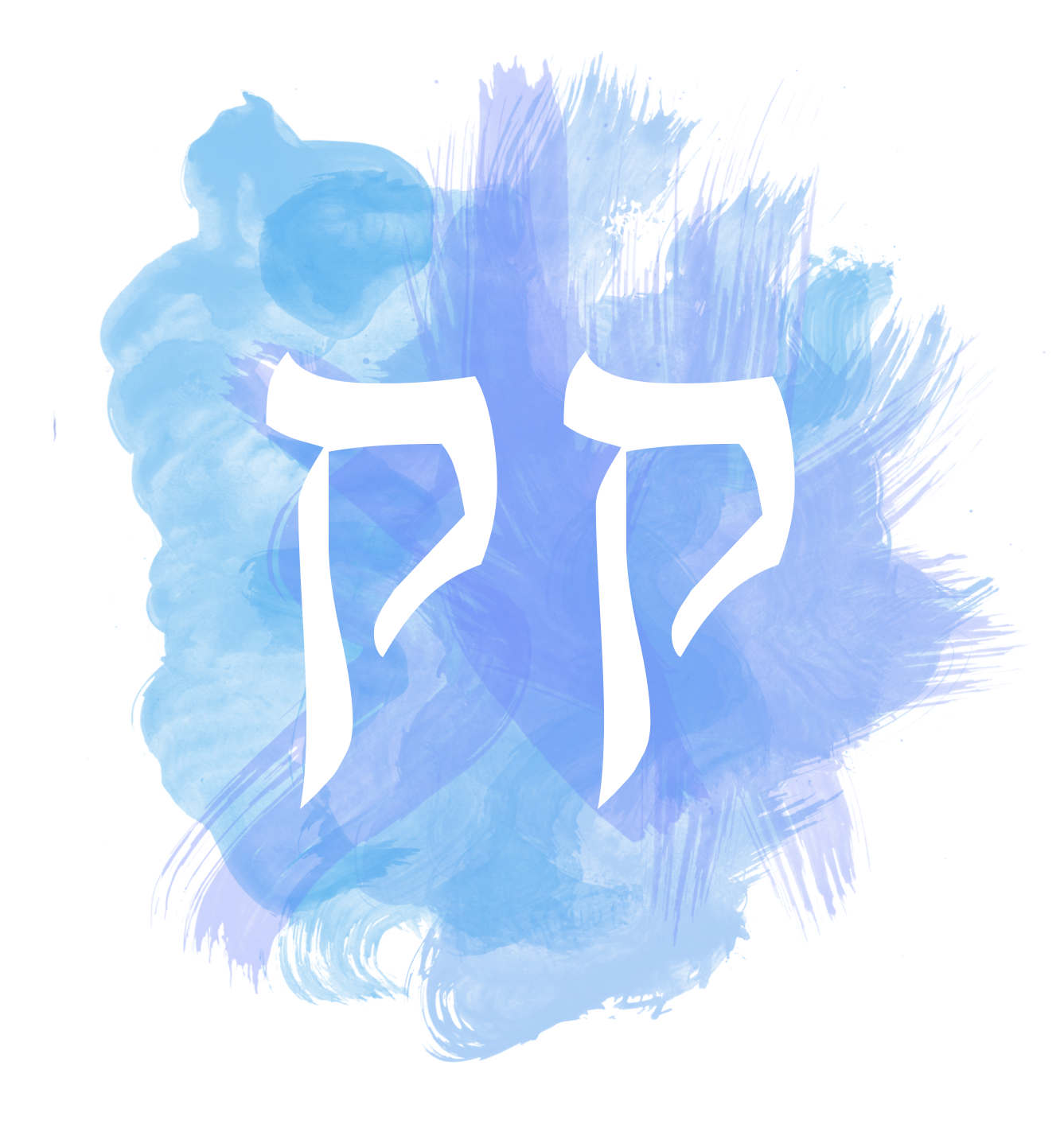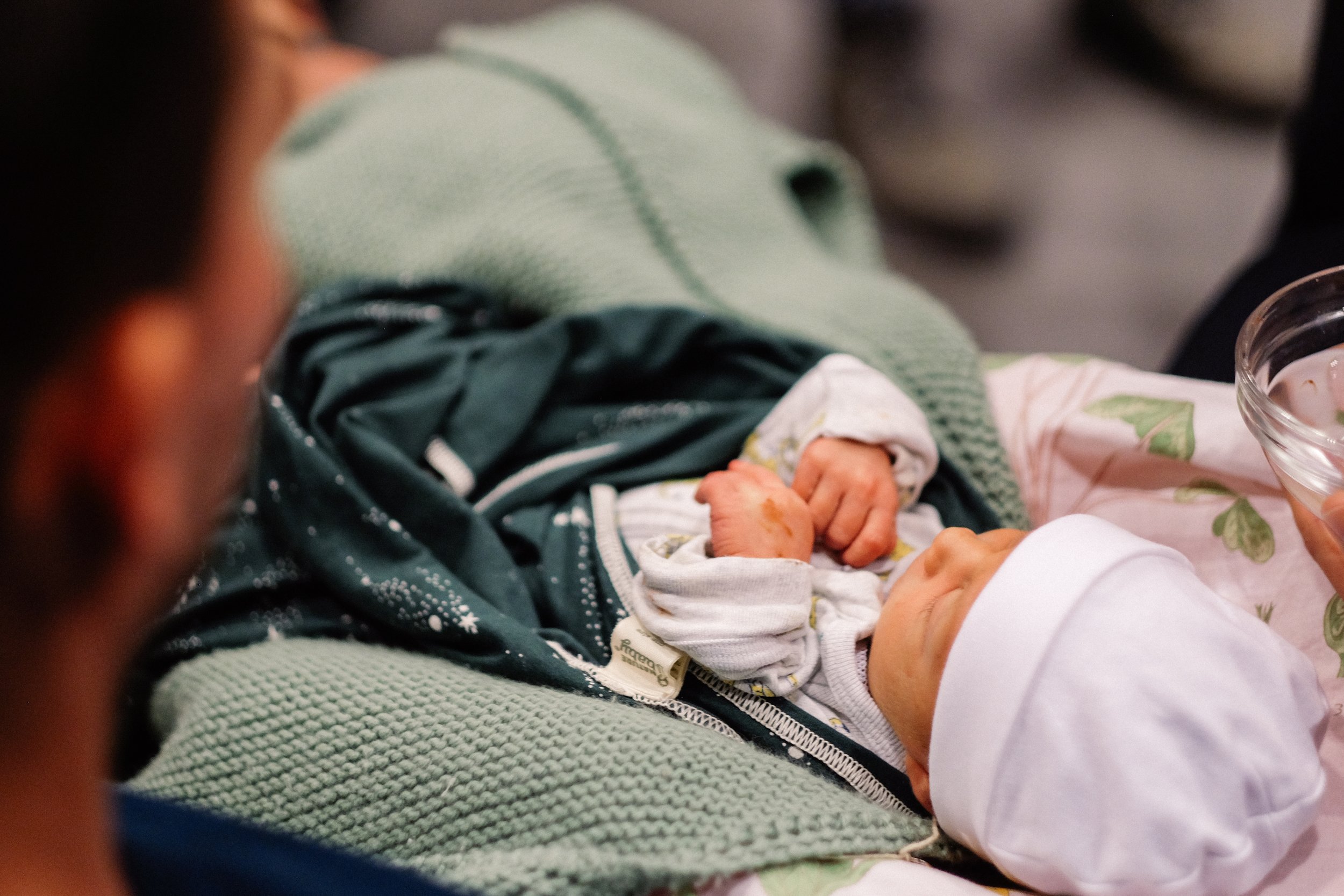Brit Chayim
(Covenant of Life)
Kolenu’s Brit Chayim is an egalitarian naming ceremony for newborn Jewish boys and girls.
The arrival of a new child is a transformative life milestone, and this ritual serves to support
parents in welcoming their new baby son/daughter into the community.
To find out more, get in touch with us.
A Jewish covenant
Drawing upon the Jewish tradition of Brit (covenant), our ceremony establishes a Brit between parents and their child: a promise to raise their child according to the values of their families, of Jewish culture, and of humanism.
This covenant will be witnessed by close family and friends attending the ceremony, thereby holding the parents accountable to their promise.
Traditional elements
Like all Kolenu services, our Brit Chayim ceremony highlights and brings to life the traditional rituals of Jewish life-cycle celebration. We gently reframe these rituals to provide context and meaning for the modern Jewish family.
Some of these important Brit rituals include:
Candle lighting
Hebrew song and Hebrew humanistic blessings
The generational chain of Kvatters who carry the baby into the ceremony room
The honour of the Sandekim who hold the baby during the ceremony
A ritual, physical marking by the parents on the child to symbolise the Brit (covenant)
The announcing of the child’s name
Food and more song!
A ceremony for all children.
In Jewish tradition, a child is named on the eighth day of their life. We believe that the significance of this ceremony is equal for all children, no matter their identity. As such, our egalitarian ceremony has been designed to be relevant and applicable to all - with brachot and interpretations available in either feminine or masculine Hebrew.
Jewish literature is full of heroes and heroines, prophetesses and prophetesses, leaders both women and men alike. In our ceremonies we draw inspiration from our culture’s leaders through blessings and song.
A non-invasive ritual marking.
Judaism is a culture of symbolism, and does not shy away from ritual markings. Following in the tradition of Milah (circumcision) yet adapting it to modern times, our ceremony uses a non-invasive, non-permanent ritual marking that the parents will bestow up their child as they enter into covenant with them.
The marking is both uniquely Jewish and Australian, weaving these two identities together in welcoming your new child into the folds of these two communities.
Marking of the rock.
The ritual of a visual marking within the context of Brit is essential. Much like a signature or a handshake are visible representations of an otherwise informal promise, a ritual marking is Judaism’s method of making salient a spoken covenant.
We use the dye of a red igneous rock, sourced from the beaches of Victoria for our marking ritual. When combined with water, the rock provides a beautiful ochre-coloured ink which can be used to paint by hand onto skin. The choice of this marking medium is deeply intentional, representing many layers of Jewish symbolism as explored below.
You may mark your child using the ink of the rock on their feet, hands, belly, or wherever you see fit. Many parents choose to draw two or three lines, representing themselves, their child, and their wider family/community.
The rock of Miriam, Moshe and the wellspring of life.
According to Jewish narrative, as the Israelites wandered the desert after escaping slavery in Egypt they were sustained by three miracles: the well of Miriam supplying water, the pillar of Aaron guiding their path, and the manna of Moshe providing sustenance¹.
Miriam’s well (Be’erah shel Miriam), described by Midrash as a rock, provided a constant stream of water for the Israelites. The rock therefore symbolises the wellspring of lifegiving water, of life itself. Many commentators have noted the well as a feminine, womb-like symbol, a hidden source of life². After Miriam’s passing, it was this same rock that Moshe attempted to wield to continue providing water for the Israelites.
In Kolenu’s Brit Chayim, the giving of life by the parents to their child is symbolised by the rock. When mixed with water, the essential element of life, it gives off a beautiful red paint to be used in the ritual marking.
Adom ve’Adamah
The colour red is the common thread of the Israelite/Jewish covenants mentioned in scripture. The Brit between God and the Jewish people at Mt. Sinai was marked by the sprinkling of blood over the people (Exodus 24:8); the Brit between humanity and God was signified by a rainbow which has the leading colour of red (Genesis 9:13); the Brit between Avraham and God was enacted through Milah and the drawing of blood (Genesis 17:10); and the Israelites were promised protection from the final plague of Egypt by marking their doorframes with the red of the Pesach lamb.
The use of a red rock in our ceremony continues this symbolism of red Jewish covenants.
Furthermore, the Hebrew words for humankind (Adam), earth (Adama) and red (Adom) all share the same root letters, their etymological relationship harkening to the creation story of Bereishit where humanity is created from the red earth. As parents mark their children with the red rock (Adama), they call to mind this Biblical connection that humanity shares with the world around them - soil, earth and the natural world.
Ritual body markings in ancient Israel
How does our Brit Chayim ritual marking fit within the wider context of Jewish body markings?
Contemporary Jewish opinion on body markings often centers on the prohibition against tattooing written in Vayikra 19:28, which forbids “incised marks on yourselves.” But a wider reading of the Torah yields many positive examples of bodily markings that the Israelites utilised in their practice.
In Bereishit, we read that Cain was marked with a body symbol to protect him from dangerous people on his wanderings. In Isaiah, the exiled Israelites in Babylon marked on their hands “lyhwh” meaning “belonging to God”. Also in Isaiah God himself is said to tattoo his palms with a symbol of a rebuilt Jerusalem, thus testifying to the eternal covenant between Israel and God. Finally, in Ezekiel we learn that during the Babylonian destruction of Jerusalem, the righteous people of the city were marked with the letter “tav”, in which they are granted divine protection from the conquering armies.
While the marking of the red rock in our Brit Chayim is nonetheless a temporary marking that fades within a day,
Our perspectives on Milah - circumcision
It is not our role to promote nor advocate for the ancient ritual of circumcision. Jewish parents should feel they have full agency over their decision to perform or not perform Milah. We simply aim to provide an alternative ritual to Milah where parents do not see this ritual as fitting for their child.







